Your Choices Count
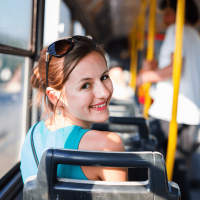 Even our simplest everyday activities use the earth’s energy resources and affect the environment. Think about it: it takes energy to make, move, and do almost everything, so even small changes in the food you eat, the way you travel, and what you buy and throw away can have a big impact on the amount of energy used to support your choices.
Even our simplest everyday activities use the earth’s energy resources and affect the environment. Think about it: it takes energy to make, move, and do almost everything, so even small changes in the food you eat, the way you travel, and what you buy and throw away can have a big impact on the amount of energy used to support your choices.
You can help your family make sustainable choices that lower your energy use, reduce your carbon footprint, and lessen your impact on the environment. You might be surprised to learn how easy it can be!
Shop Wisely
It takes a tremendous amount of energy to convert the earth’s resources into the many products we use and eat every day. It also takes a lot of energy to package these products, transport them to stores, and get them from the stores to our homes. And disposing of product packaging contributes waste to the environment. You can save energy and help the environment by shopping wisely:
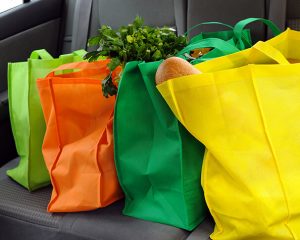
- Bring your own cloth shopping bags into the grocery store. When the clerk asks “Paper or plastic?” you can proudly say “Neither!” (If your store offers a discount for bringing your own bags, see if your family will pass that savings along to you!)
- Buy in bulk. Buying in larger quantities means less packaging to recycle or send to landfills. You can make your own single servings for your school lunches by putting bulk food into reusable containers. You can also save on packaging by reusing plastic, paper, or cloth bags when you purchase from bulk bins.
- Ask your parents to buy foods grown close to where you live. Visit local fruit stands and farmers markets, or ask your grocery clerk to recommend locally grown produce that hasn’t been flown in from across the globe. This saves energy used for transporting the food to you.
- Reuse items to save even more energy—avoid products such as bottled water and disposable cameras and razors; repair your clothes, gadgets, and sporting equipment; borrow books from the library or a friend, or buy from a used bookstore.
Plant a Tree
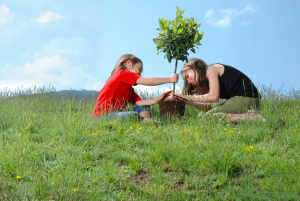 Trees help balance the effects of energy use and human activities:
Trees help balance the effects of energy use and human activities:
- Leaves—Leaves capture sunlight and turn it into the energy the tree uses to grow. In the process, the tree absorbs CO2 and gives off oxygen.
- Bark and Wood—The outer bark protects the tree. The inner bark moves sap and water to where the tree needs them.
- Shade—Tree shade makes a nice place for people and animals to cool down on hot days.
- Roots—Roots absorb water and nutrients from the soil, keep the tree stable, and store energy.
Bike & Walk
Walking and bicycling produce no pollutants or CO2 and help keep the environment healthy. They also contribute to personal health: getting plenty of exercise can lengthen your life and help you avoid health problems like obesity and heart disease. People are easy to fuel—all it takes is food. Plus, walking and biking are just plain fun!
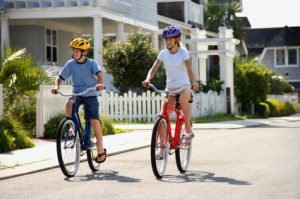 If you already bike or walk to school or afterschool activities, congratulations!
If you already bike or walk to school or afterschool activities, congratulations!
If you don’t, here are some tips to get started:
- First, check with your parents to get permission. Find out if they will allow you to bike or walk by yourself, or if you must go with friends and/or with an adult.
- Once you get permission, decide with your parents on the best route. It should have the least traffic and fewest streets to cross. A route with sidewalks is best.
- Consider getting some friends together to form a “walking school bus” or a “bicycle train”—a group of kids who walk or bike to school with one or more adults. Consider participating in International Walk to School Week, which is the first week in October.
- Watch out for cars at all driveways and intersections. Always look left-right-left before you cross a street. The second look left is to re-check for traffic that is closest to you. Only cross streets at marked crosswalks, and obey all traffic signals.
- Always wear reflective clothing if it is dark, rainy, or snowy.
Line Dry
Do you do your own laundry, or help your family with your household laundry? If so, you can help save energy and reduce your family’s energy bill by line drying your clothes on a rack or clothesline instead of in the dryer.
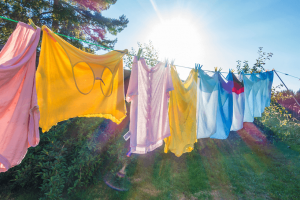 Here are some good reasons to line dry your clothing:
Here are some good reasons to line dry your clothing:
- Line drying saves energy and helps the environment. Clothes dryers run on electricity or natural gas, so they contribute to CO2 emissions. Line drying produces no CO2.
- Line drying saves money. Line drying instead of using an electric or gas-powered clothes dryer can save most families at least $100 per year.
- Clothes dried on a line last longer than clothing put through the dryer. Have you ever cleaned out the lint filter on your dryer? All that lint is fabric that wears off your clothes from the dryer’s heat and tumbling action.
You can line dry even if you don’t live in a warm climate! Put a clothing rack in your laundry room or basement, above the dryer.
Use Water Wisely
Using water wisely means saving it when you can, and not wasting it. Saving water is good for the earth, your family, and your community:
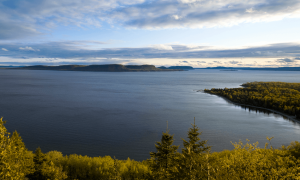 When you use water wisely, you help the environment. You save water for fish and animals. You help preserve drinking water supplies. And the less water you send down the drain, the less work our wastewater treatment plants have to do to make it clean again.
When you use water wisely, you help the environment. You save water for fish and animals. You help preserve drinking water supplies. And the less water you send down the drain, the less work our wastewater treatment plants have to do to make it clean again.
When you use water wisely, you save energy. You save the energy that your water supplier uses to treat and move water to you, and the energy your family or your school uses to heat your water.
When you use water wisely, you save money. If you use less water, your family and your school will have more money left to spend on other things.


